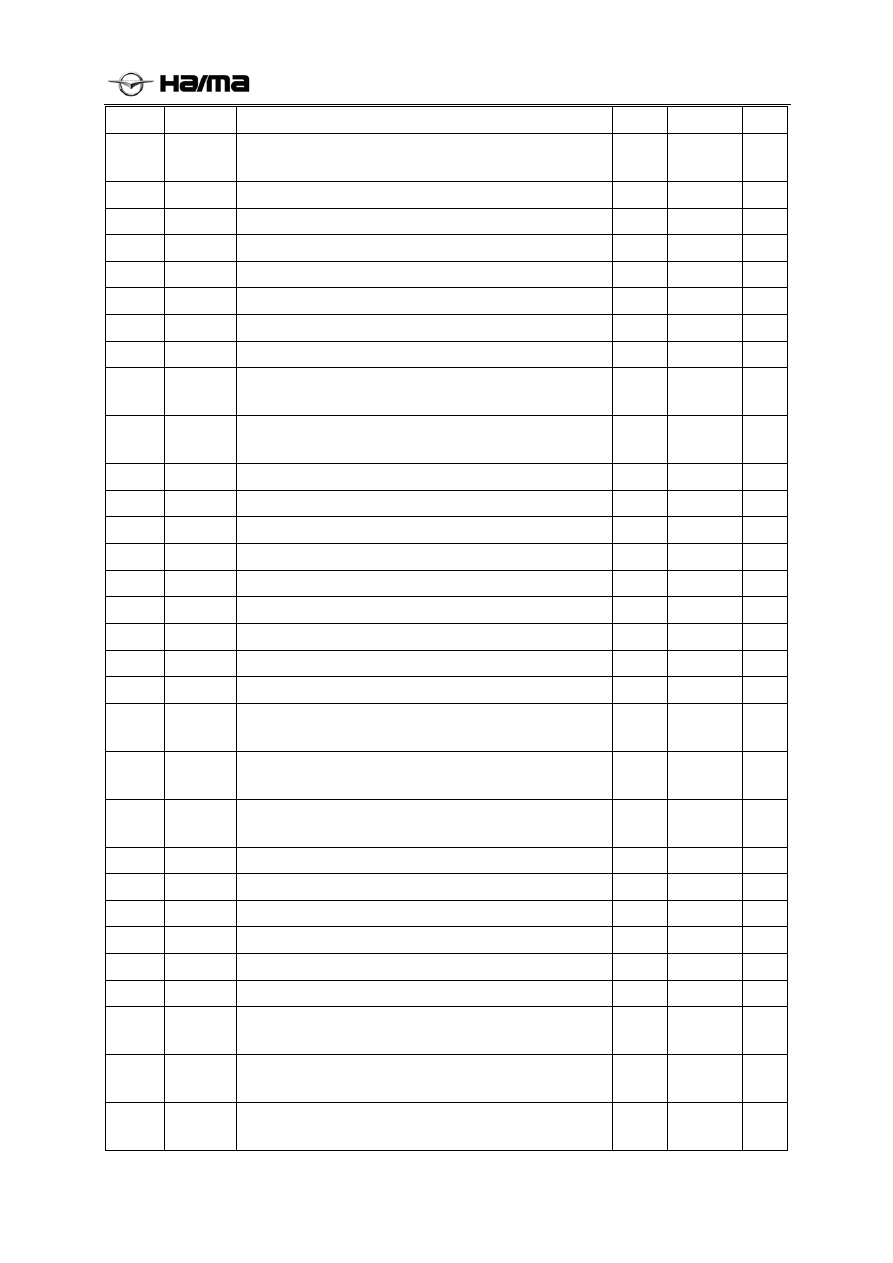Haima S5. Instruction - part 5

Electronic Fuel Injection Control System 1B
-
16
17
P0105
Intake pressure sensor signal, no fluctuation (freezing)
3
√ ×
18 P0106
Intake pressure sensor/barometric pressure sensor,
improper
3
√ ×
19
P0107
Intake pressure sensor’s short circuit to the ground
3
√ ×
20
P0108
Intake pressure sensor’s short-circuit to the battery
3
√ ×
21
P0112
Intake temperature sensor signal circuit, low voltage
3
√ ×
22
P0113
Intake temperature sensor signal circuit, high voltage
3
√ ×
23
P0117
Engine coolant temperature sensor circuit, low voltage
3
√ ×
24
P0118
Engine coolant temperature sensor circuit, high voltage
3
√ ×
25
P0121
Electronic throttle position sensor1 signal, improper
3
√ ×
26 P0122
Electronic throttle position sensor1 signal circuit, low
voltage
3
√ ×
27 P0123
electronic throttle position sensor1 signal circuit, high
voltage
3
√ ×
28
P0130
Upstream oxygen sensor signal, improper
3
√ ×
29
P0131
Upstream oxygen sensor signal, low voltage
3
√ ×
30
P0132
Upstream oxygen sensor signal circuit, high voltage
3
√ ×
31
P0133
Upstream oxygen sensor, aging
3
√ ×
32
P0134
Upstream oxygen sensor circuit, signal circuit fault
3
√ ×
33
P0136
Downstream oxygen sensor signal, improper
3
√ ×
34
P0137
Downstream oxygen sensor signal, low voltage
3
√ ×
35
P0138
Downstream oxygen sensor signal circuit, high voltage
3
√ ×
36
P0140
Downstream oxygen sensor circuit, signal fault
3
√ ×
37 P0170
Offline detection A/F ratio close-loop control
self-learning, improper
7 × ×
38 P0171
Offline detection A/F ratio close-loop control
self-learning, too lean
7 × ×
39 P0172
Offline detection A/F ratio close-loop control
self-learning, too thick
7 × ×
40
P0201
Cylinder 1 fuel injector control circuit, open
3
√ ×
41
P0202
Cylinder 2 fuel injector control circuit, open
3
√ ×
42
P0203
Cylinder 3 fuel injector control circuit, open
3
√ ×
43
P0204
Cylinder 4 fuel injector control circuit, open
3
√ ×
44
P0219
Engine rotating speed exceeds the upper limitation
6
×
×
45
P0221
Electronic throttle position sensor2 signal, improper
3
√ ×
46 P0222
Electronic throttle position sensor2 signal circuit, low
voltage
3
√ ×
47 P0223
Electronic throttle position sensor2 signal circuit, high
voltage
3
√ ×
48 P0261
Cylinder 1 fuel injector control circuit’s short circuit to
ground
3
√ ×